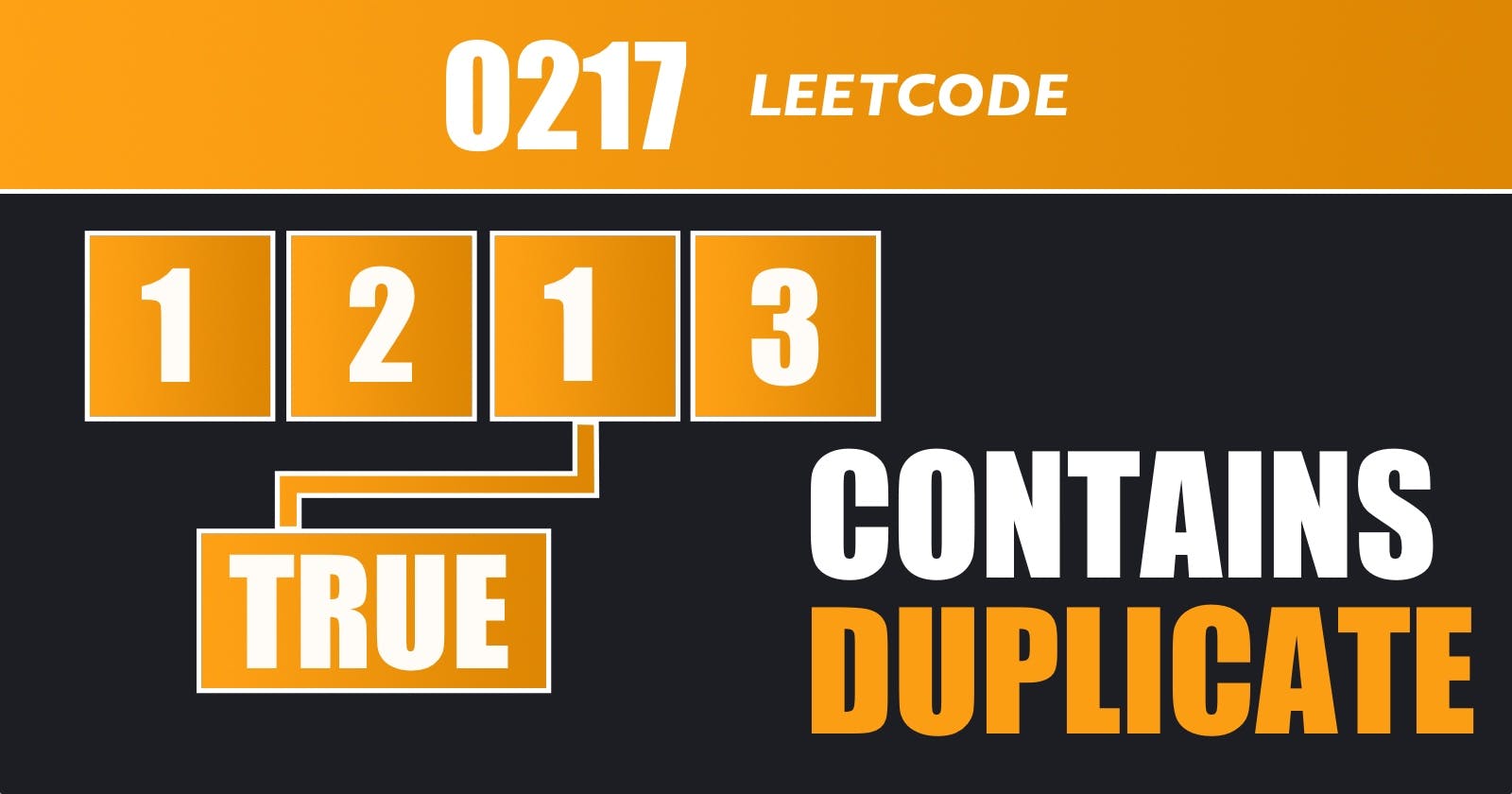Problem - Leetcode
Given an integer array nums, return true if any value appears at least twice in the array, and return false if every element is distinct.
Example 1:
Input: nums = [1,2,3,1]
Output: true
Example 2:
Input: nums = [1,2,3,4]
Output: false
Example 3:
Input: nums = [1,1,1,3,3,4,3,2,4,2]
Output: true
Constraints:
1 <= nums.length <= 10<sup>5</sup>-10<sup>9</sup> <= nums[i] <= 10<sup>9</sup>
Answer-1 Top Runtime in Golang
func containsDuplicate(nums []int) bool {
nums_map := map[int]int{}
for _, n := range nums {
if _, ok := nums_map[n]; !ok {
nums_map[n] = 1
} else {
return true
}
}
return false
}

This code defines a function named containsDuplicate that takes a single argument nums, which is a slice of integers. The purpose of this function is to determine whether the given slice of integers contains any duplicates or not. It returns a boolean value (true if there are duplicates, and false otherwise).
Here's a step-by-step breakdown of the code:
The function starts by declaring an empty map named
nums_map, which is used to keep track of the frequency of each integer in the input slice. The keys of the map are integers, and the values are integers representing the frequency of each integer in the slice.The code then enters a loop that iterates over each element (
n) in the inputnumsslice.Inside the loop, the code checks whether the current integer
nis already present in thenums_mapby using the line:if _, ok := nums_map[n]; !ok {Here,
okis a boolean variable that indicates whether the keynis present in the map or not. Ifnis not present (!okis true), then the code sets the frequency ofnto1in thenums_map, indicating that this integer has been encountered once.If the integer
nis already present in thenums_map, it means that there's a duplicate. In that case, the code immediately returnstrue, indicating that duplicates have been found in the input slice.If no duplicate has been found during the iteration, the code returns
false, indicating that no duplicates were detected in the input slice.
In essence, this code uses a map to keep track of the frequency of integers in the input slice. If any integer is encountered more than once, it means there's a duplicate, and the function returns true. Otherwise, if no duplicates are found after iterating through the entire input slice, the function returns false.
Answer-2 Top Memory in Golang
import "sort"
func containsDuplicate(nums []int) bool {
sort.Slice(nums, func(i, j int) bool{
return nums[i] < nums[j]
})
for i := 1; i < len(nums); i++ {
if nums[i] == nums[i - 1] {
return true
}
}
return false
}
This code defines a function called containsDuplicate that takes a slice of integers ([]int) named nums as its parameter and returns a boolean value (true or false). The purpose of this function is to determine whether the given slice contains any duplicate integers.
Let's break down the code step by step:
The
import "sort"statement at the beginning of the code indicates that the built-insortpackage from Go's standard library is being imported. This package provides sorting functionalities that will be used later in the code.The
func containsDuplicate(nums []int) boolline defines the functioncontainsDuplicatethat takes a single parameter,nums, which is a slice of integers.Inside the function,
sort.Slice(nums, func(i, j int) bool {...}sorts thenumsslice in ascending order using thesort.Slicefunction. The second argument tosort.Sliceis an anonymous function (also known as a closure) that defines how the sorting should be performed. The function takes two indicesiandj, and it compares the values at those indices in thenumsslice. If the value at indexiis less than the value at indexj, the function returnstrue, indicating that the values should be swapped during sorting.After sorting the
numsslice, a loop is started using theforstatement:for i := 1; i < len(nums); i++ {...}. The loop iterates through the sortednumsslice, starting from index 1 and going up to the length of the slice minus one.Inside the loop, the code checks if the current element at index
iis equal to the previous element at indexi - 1. If they are equal, it means a duplicate has been found, and the function immediately returnstrue.If the loop completes without finding any duplicates, the function returns
falseto indicate that no duplicates were found in thenumsslice.
In summary, this code sorts the given slice of integers and then iterates through the sorted slice, checking for consecutive elements that are equal. If any duplicates are found, the function returns true; otherwise, it returns false. This approach leverages the sorting functionality to efficiently identify duplicate elements in the input slice.

